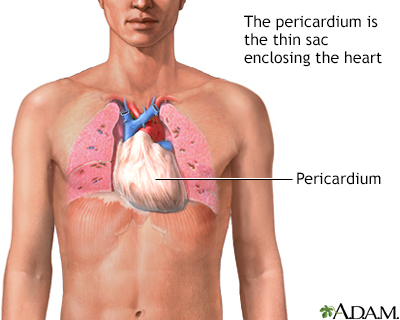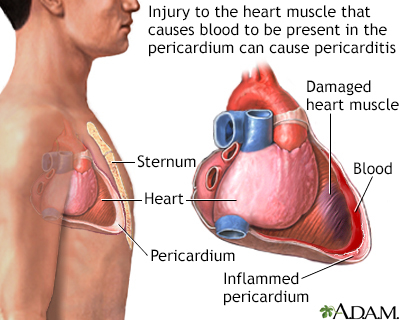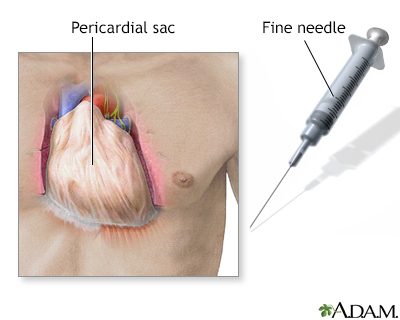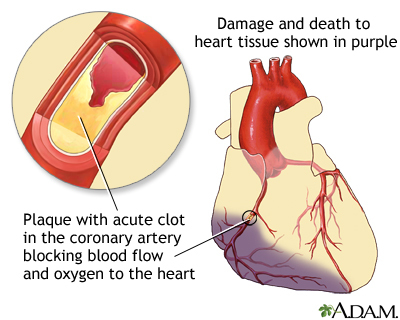A Fresh Fruit a Day Keeps Heart Attacks at Bay
A little bit of fresh fruit every day can give a big boost to heart health. Researchers at the University of Oxford in the United Kingdom have found that a…

Update your location to show providers, locations, and services closest to you.
Pericarditis is inflammation and swelling of the covering of the heart (pericardium). It can occur in the days or weeks following a heart attack.

Dressler syndrome; Post-MI pericarditis; Post-cardiac injury syndrome; Postcardiotomy pericarditis
Two types of pericarditis can occur after a heart attack.
Early pericarditis: This form most often occurs within 1 to 3 days after a heart attack. Inflammation and swelling develop as the body tries to clean up the damaged heart tissue.

Late pericarditis: This is also called Dressler syndrome. It is also called post-cardiac injury syndrome or postcardiotomy pericarditis). It most often develops several weeks or months after a heart attack, heart surgery, or other trauma to the heart. It can also happen a week after a heart injury. Dressler syndrome is thought to occur when the immune system attacks healthy heart tissue by mistake.
Things that put you at higher risk for pericarditis include:
Symptoms include:
The health care provider will listen to your heart and lungs with a stethoscope. There may be a rubbing sound (called a pericardial friction rub, not to be confused with a heart murmur). Heart sounds in general may be weak or sound far away.
A buildup of fluid in the covering of the heart or space around the lungs (pericardial effusion) is not common after a heart attack. But, it often does occur in some people with Dressler syndrome.
Tests may include:
The goal of treatment is to make the heart work better and reduce pain and other symptoms.
Aspirin may be used to treat inflammation of the pericardium. A drug called colchicine is often used as well.
In some cases, excess fluid surrounding the heart (pericardial effusion) may need to be removed. This is done with a procedure called pericardiocentesis. If complications develop, part of the pericardium may sometimes need to be removed with surgery (pericardiectomy).

The condition may recur in some cases.
Possible complications of pericarditis are:
Contact your provider if:




Jouriles NJ. Pericardial and myocardial disease. In: Libby P, Bonow RO, Mann DL, Tomaselli, GF, Bhatt DL, Solomon SD, eds. Braunwald's Heart Disease: A Textbook of Cardiovascular Medicine. 12th ed. Philadelphia, PA: Elsevier; 2022:chap 68.
Lewinter MM, Cremer PC, Klein AL. Pericardial diseases. In: Libby P, Bonow RO, Mann DL, Tomaselli, GF, Bhatt DL, Solomon SD, eds. Braunwald's Heart Disease: A Textbook of Cardiovascular Medicine. 12th ed. Philadelphia, PA: Elsevier; 2022:chap 86.
Maisch B, Ristic AD. Pericardial diseases. In: Vincent J-L, Abraham E, Moore FA, Kochanek PM, Fink MP, eds. Textbook of Critical Care. 7th ed. Philadelphia, PA: Elsevier; 2017:chap 84.
A little bit of fresh fruit every day can give a big boost to heart health. Researchers at the University of Oxford in the United Kingdom have found that a…

July 9, 2014
For women taking certain kinds of pain relievers, a heart attack could be waiting in their medicine cabinets. A University of Florida study has found that the…
Division of Nephrology, +6 more